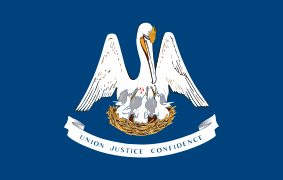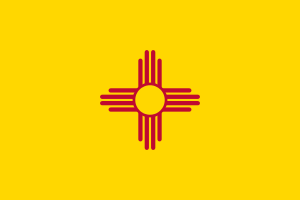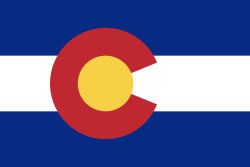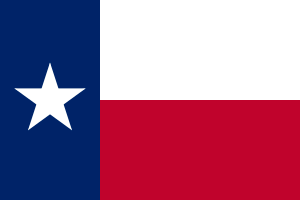Hispanos
| Total population | |
|---|---|
|
est. 1.5 million up to roughly 0.5% of the U.S. population [1] | |
| Regions with significant populations | |
| Languages | |
|
American English · Spanish Spanish in the United States · New Mexican Spanish · Ladino · French (In Louisiana) | |
| Religion | |
|
Predominantly Roman Catholic · Protestant · Agnostic or Atheist · Jewish minorities. | |
| Related ethnic groups | |
| Spanish Americans · Mexican Americans · white Hispanic and Latino Americans · Native Americans in the United States to some extent. |
Hispanos (from Spanish: adj. prefix Hispano- relating to Spain, from Latin: Hispānus) are people of colonial Spanish descent traditionally from what is today the Southwestern United States, who retained a predominantly Spanish culture, and have remained living there since before that region was territorially incorporated into the United States, dating back as far as the early 16th century when it was a part of New Spain. The distinction was made to compensate for flawed U.S. Census practices in the 1930s which used to characterize Hispanic people as recent immigrants rather than centuries-long established settlers, or as non-whites.[2]
The largest of these groups are the Hispanos of New Mexico, originating in Spanish and Mexican Santa Fe de Nuevo México, they have left a large impact on New Mexico’s culture, cuisine, and music. Many of the New Mexican Hispanos are mestizos, of mixed Hispanic ancestry, with Pueblo, Apache, Navajo, Comanche, and Native Mexican heritage.
Description
Though the word Hispano in the Spanish language could describe anyone of Spanish ancestry, when used in the English language the term specifically refer to Hispanic and Latino Americans who have lived in the Southwestern United States for centuries, who did not cross any border into the United States, but rather had the border cross them. They have lived in the area that today is the Southwestern USA from the time that the area represented the northernmost region of the colony of New Spain. That Spanish colony then mostly became Mexico upon its independence from Spain. Finally, the northernmost parts of Mexico became a part of the USA, which the USA acquired along with the existing population.
Hispanos are mostly descendants of Spanish settlers (various regional ethnic groups from Spain, including Castillians, Andalusians, Extremeños, Galicians, Catalans, but also Basques and Sephardic Jewish-origin Conversos who converted to Christianity to escape persecution from the Spanish Inquisition), Mexicans (white Mexicans, mestizos, and indigenous Mexicans) who arrived during the Spanish colonial period and the Mexican period, and Mestizos of mixed Spanish and Native American ancestry.
Some Hispanos differentiate themselves culturally from the population of Mexican Americans whose ancestors arrived in the Southwest after the Mexican Revolution.[3][4]
History
As the United States expanded westward, it annexed lands with a long-established population of Spanish-speaking settlers, who were overwhelmingly or exclusively of white Spanish ancestry (cf. White Mexican). Prior to incorporation into the United States (and briefly, into Independent Texas), Hispanos had enjoyed a privileged status in the society of New Spain, and later in post-colonial Mexico.
Regional subgroups of Hispanos were named for their geographic location in the so-called "internal provinces" of New Spain:
- Californios in Spanish California (Las Californias), and later Mexican (Upper) California (Alta California)
- Floridianos in Spanish Florida
- Nuevomexicanos in Spanish New Mexico, and later Mexican New Mexico (Nuevo México)
- Tejanos in Spanish Texas, and later Mexican Texas (Tejas)
Another group of Hispanos, the Isleños ("Islanders"), are named after their geographic origin in the Old World, viz. the Canary Islands. In the US today, this group is primarily associated with the state of Louisiana.
Demography
Hispano populations include Californios in California, Arizona and Nevada, along with Utah and southwestern Wyoming, which had no Hispano communities, and western Colorado, that had no Californio communities); Nuevomexicanos in New Mexico and Colorado; Tejanos in Texas; Isleños in Louisiana and Texas; and Adaeseños (of Canarian, Mexican and Amerindian descent) in northwestern Louisiana. While generally integrated into mainstream American societies, Hispanos have retained much of their colonial culture, and have also absorbed several American Indian and Cajun traditions. Many Hispanos also identify with later waves of Mexican immigrants that arrived after these lands became part of the US.
Many Hispanos, particularly those of younger generations, identify more with the mainstream population and may understand little or no Spanish. Most of them are Roman Catholic Christians. Several linguists and folklorists have studied the culture and language of some of the Hispanic communities, including Samuel G. Armistead, who studied the Isleño communities of Louisiana, and Juan Bautista Rael, who studied the Nuevomexicanos communities.





Notable people
See also
References
- ↑ "B03001. HISPANIC OR LATINO ORIGIN BY SPECIFIC ORIGIN - Universe: TOTAL POPULATION". 2007 American Community Survey. U.S. Census Bureau. Retrieved 2008-10-01.
- ↑ William W. Winnie Jr. (May 1960). "The Spanish Surname Criterion for Identifying Hispanos in the Southwestern United States: A Preliminary Evaluation". Social Forces. Oxford University Press. pp. 363–366. Retrieved 2015-03-01.
- ↑ Archived April 30, 2008, at the Wayback Machine.
- ↑ Archived October 6, 2007, at the Wayback Machine.
- ↑ Alexander V. King. "California Spanish Genealogy - Californio Families". Sfgenealogy.com. Retrieved 2015-03-01.